10 Best Yoga Poses and Asanas for Tuberculosis Patients
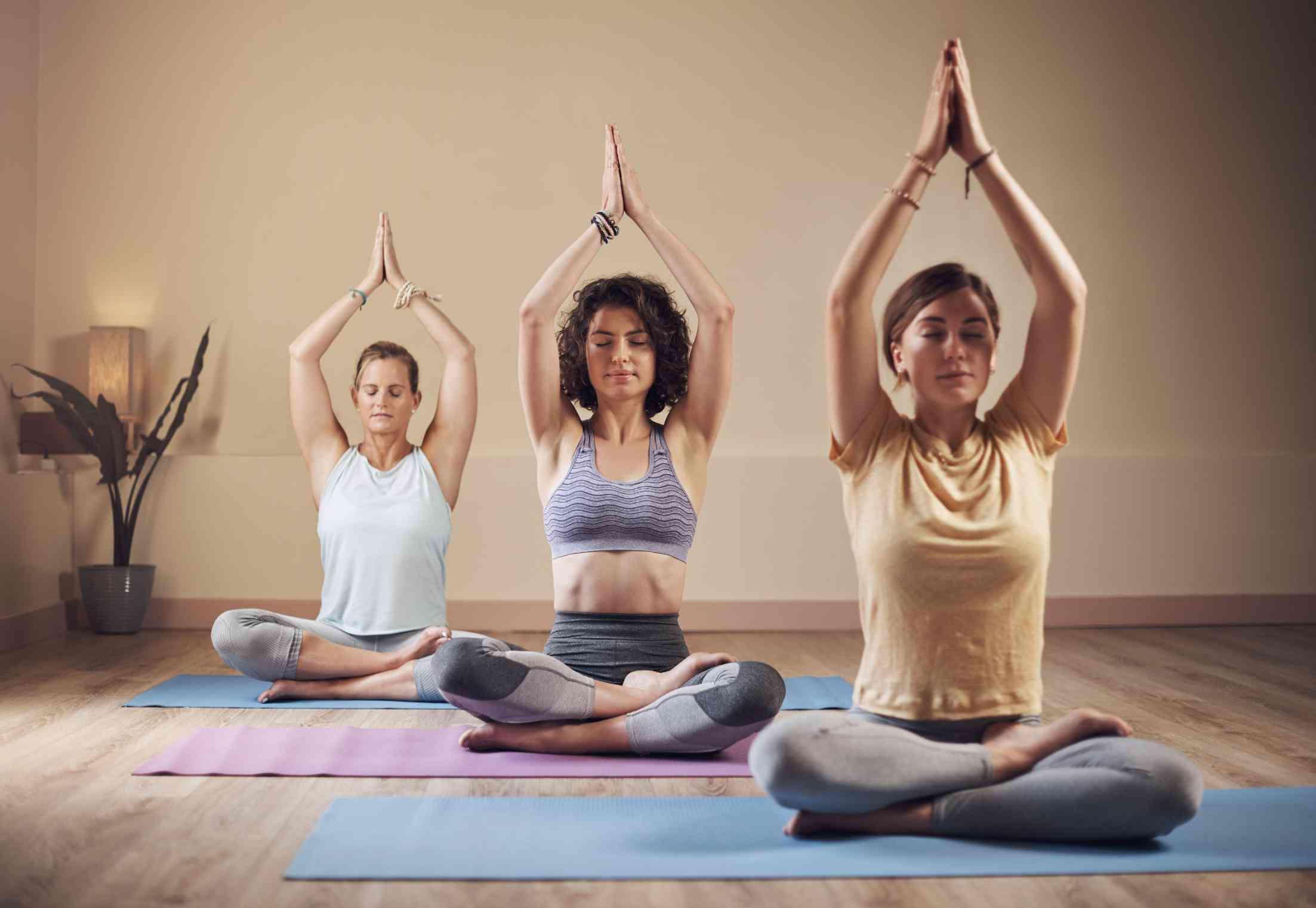
Yoga is a powerful adjunct therapy in treating tuberculosis (TB) holistically, promoting overall health and aiding symptom management. Specific breathing exercises and gentle postures enhance lung capacity, improve respiratory function, and reduce stress. These practices support the immune system, aiding the body in fighting infection.
Additionally, yoga encourages relaxation and mental well-being, which are crucial for long-term treatment. Are you seeking natural methods to support TB treatment? Check out these 10 simple yet effective asanas for tuberculosis patients.

Table of Contents

How Effective is Yoga for Tuberculosis Patients?
Though yoga is a preventive science, it also serves as a healing process, along with prescribed medications, and cleanses the upper respiratory tract and sinuses. The 88th Indian Science Congress organisers have observed that yoga, along with meditation, is an ideal promotional aspect of holistic health.
Another study by an Indian immunologist, Dr H.K. Sahib, from Central Drug Research Institute, reveals that those who practice yoga daily are less prone to malarial, viral, and bacterial diseases.
Although curative measures such as yoga and meditation may curb the spread of the TB bacteria, the action is time-consuming. Therefore, it is best to consult a medical practitioner before performing yoga to prevent tuberculosis.
According to the World Health Organisation, in 2020, approximately 1.5 million people succumbed to tuberculosis worldwide. The infectious disease caused by the bacteria Mycobacterium tuberculosis majorly affects the lungs.
Other than the lungs, TB can spread to lymph nodes, brain, kidneys, bones and heart due to blood circulation, resulting in deadly ailments such as joint destruction, spinal tuberculosis, meningitis, and inaccurate cardiac and kidney functioning.
Best Yoga Poses for Tuberculosis Patients
Yoga poses that focus on gentle stretching and breathing can benefit tuberculosis patients, helping to improve lung function and promote relaxation and overall well-being. Here are a few yoga poses that help with tuberculosis:
1. Bhastrika Pranayama (Bellows Breathing)
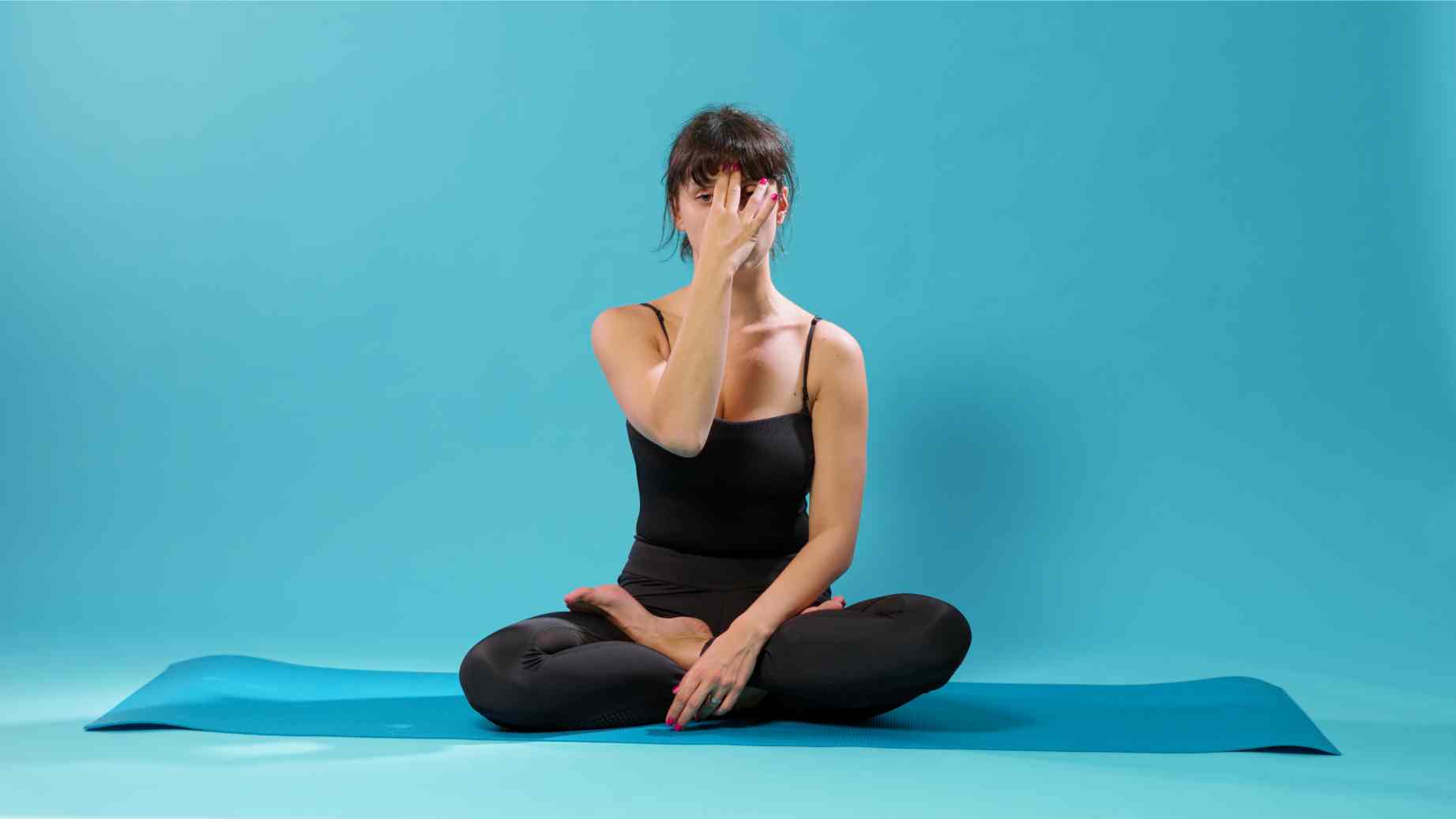
This yoga pose strengthens the lungs and diaphragm, clearing phlegm accumulation to improve oxygen levels and carbon dioxide exchange in the blood flow. Moreover, it is the best yoga pose to prevent tuberculosis and soothe throat inflammation. Experts also recommend this yoga pose to treat gastric and neurological concerns.
Contraindications: Bhastrika Pranayam must be avoided by individuals with cardiac, stomach, spleen, intestine, kidney, or any other complications, hypertension, or ulcers.
Steps to Do Bhastrika Pranayama:
Step 1: To perform Bhastrika Pranayama, sit comfortably with your back straight and take a deep breath through your nose.
Step 2: Forcefully exhale through your nose, contracting your abdominal muscles.
Step 3: Continue this rapid and forceful inhalation and exhalation for 10-20 breaths.
Step 4: After completing the set, take a deep breath, hold it for a few seconds, and then exhale slowly, repeating the process as needed.
2. Bhujangasana (Cobra Pose)

Regular practising of Bhujangasana opens the chest to clear the lung and heart passages by enhancing blood and oxygen flow in the body. It further cures the symptoms of asthma, irregular menstrual cycles, fatigue, and stress by elevating one’s mood. Individuals can try this asana to relieve lower back stiffness and improve flexibility.
Contraindications: Pregnant women and people suffering from a hernia, back injuries, headaches, or those who have undergone recent abdominal surgeries should not opt for this type of yoga pose.
Steps to Do Bhujangasana:
Step 1: To perform Bhujangasana, lie face down on the floor with your legs extended and feet together.
Step 2: Place your hands under your shoulders and elbows close to your body.
Step 3: Inhale and slowly lift your chest off the ground, keeping your lower ribs on the floor and using your back muscles rather than pushing with your hands.
Step 4: Hold the pose for a few breaths, then exhale and gently lower your chest to the floor.
3. Kapalbhati Pranayama (Breath of Fire)

Kapalbhati is often recommended to elevate lung capacity and liver and kidney performance. Besides, performing this yoga regularly leads to an endothermic reaction, helping dissolve toxins. It also amplifies immunity and rejuvenates the brain to boost concentration by activating the chakras of the human body.
Contraindications: Avoid this posture if you are suffering from viral infections during pregnancy and menstrual cycle, neck injury, lower back pain, or indigestion.
Steps to Do Kapalbhati Pranayama:
Step 1: To perform Kapalbhati Pranayama, sit comfortably with your spine straight and take a deep breath.
Step 2: Exhale forcefully through your nose, pulling your abdominal muscles towards your spine.
Step 3: Allow the inhalation to happen passively as your abdomen relaxes, focusing on the active, forceful exhalation.
Step 4: Continue this cycle of rapid exhalations and passive inhalations for about 1-2 minutes. After completing the practice, take a few deep breaths and relax.
4. Tadasana (Mountain Pose)

Practising Tadasana regularly helps strengthen bronchioles and lungs and improves respiratory system regulation. Moreover, this yoga pose for tuberculosis patients effectively relieves body aches, tuberculosis tension, and pain. As the Mountain Pose provides optimal stretch to nerves and muscles, it also helps strengthen thighs, ankles and knees.
Contraindications: This yoga pose is restricted for TB patients facing difficulties standing for long, acute migraine, weak leg muscles and knee locking.
Steps to Do Tadasana:
Step 1: To perform Tadasana, stand with your feet together and your arms at your sides.
Step 2: Distribute your weight evenly across both feet, grounding them firmly into the floor.
Step 3: Inhale and stretch your arms overhead, interlacing your fingers with palms facing upward.
Step 4: Reach up through your fingertips, lengthening your spine and lifting your chest.
Step 5: Hold the pose for a few breaths, maintaining balance and stability, then exhale and release your arms back to your sides.
5. Trikonasana (Triangle Pose)
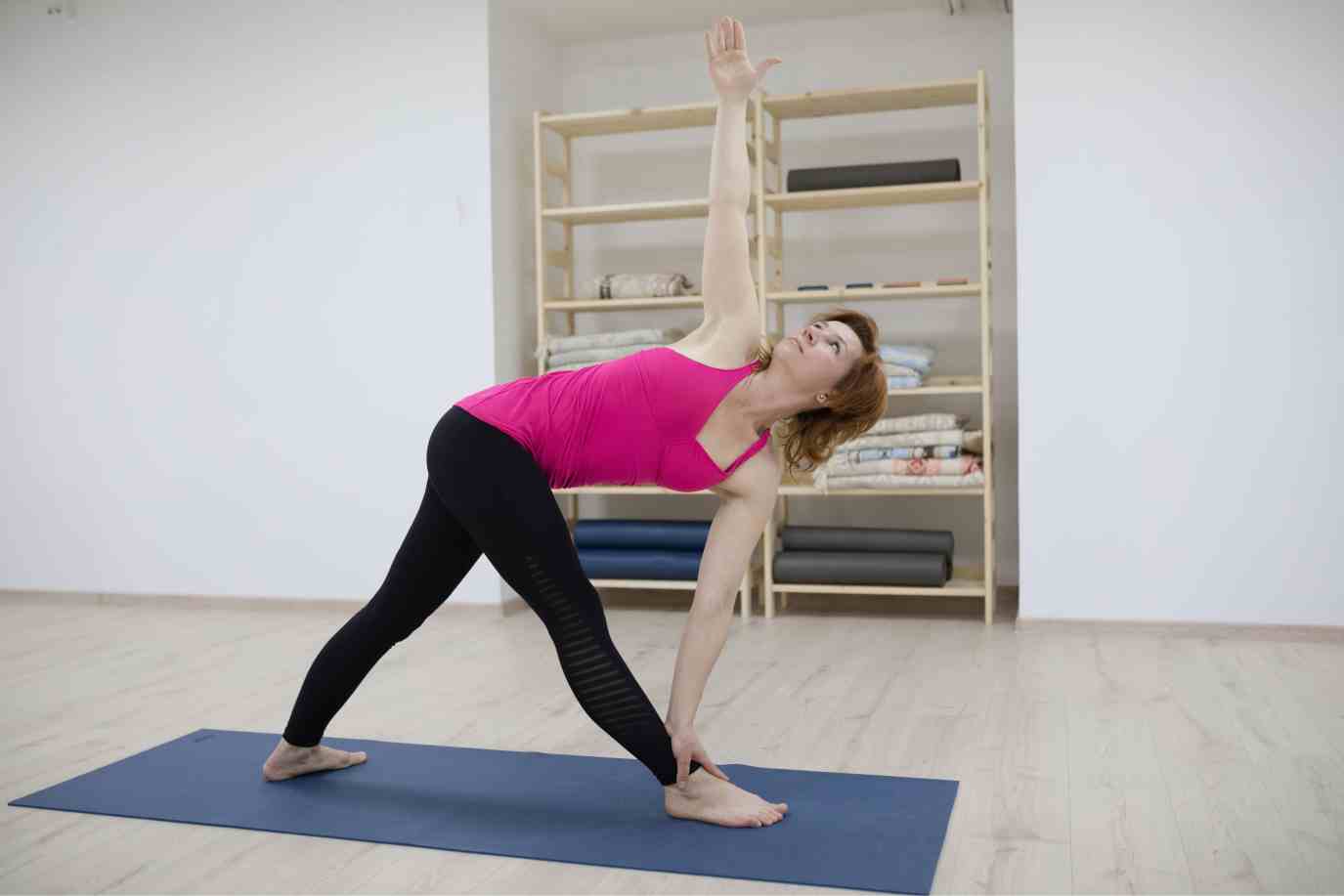
Experts recommend this yoga to restore the functionalities of the immunity system and liver. Also known as a stress buster, Trikonasana induces blood circulation and helps fight sciatica and anxiety attacks. In addition, it maintains mental and physical equilibrium. Performing the Triangle Pose daily will strengthen legs, arms, knees, chest and ankles.
Contraindications: Anyone with a disc bulge, blood pressure, or cardiac concerns is prohibited from attempting this posture. Also, women in their first trimester should perform this under the surveillance of a professional. During the second and third trimesters, they can use a block for support and comfort.
Steps to Do Trikonasana:
Step 1: To perform Trikonasana, stand with your feet about 3-4 feet apart.
Step 2: Turn your right foot out 90 degrees and your left foot slightly inwards.
Step 3: Extend your arms parallel to the floor, palms facing down.
Step 4: Inhale and reach your right hand towards your right foot, bending at the hip while keeping both legs straight.
Step 5: Place your right hand on your shin, ankle, or the floor outside your right foot, and extend your left arm straight towards the ceiling.
Step 6: Turn your head to look at your left hand. Hold the pose for a few breaths, then inhale to come up and repeat on the other side.
6. Uttanapadasana (Raised Leg Pose)
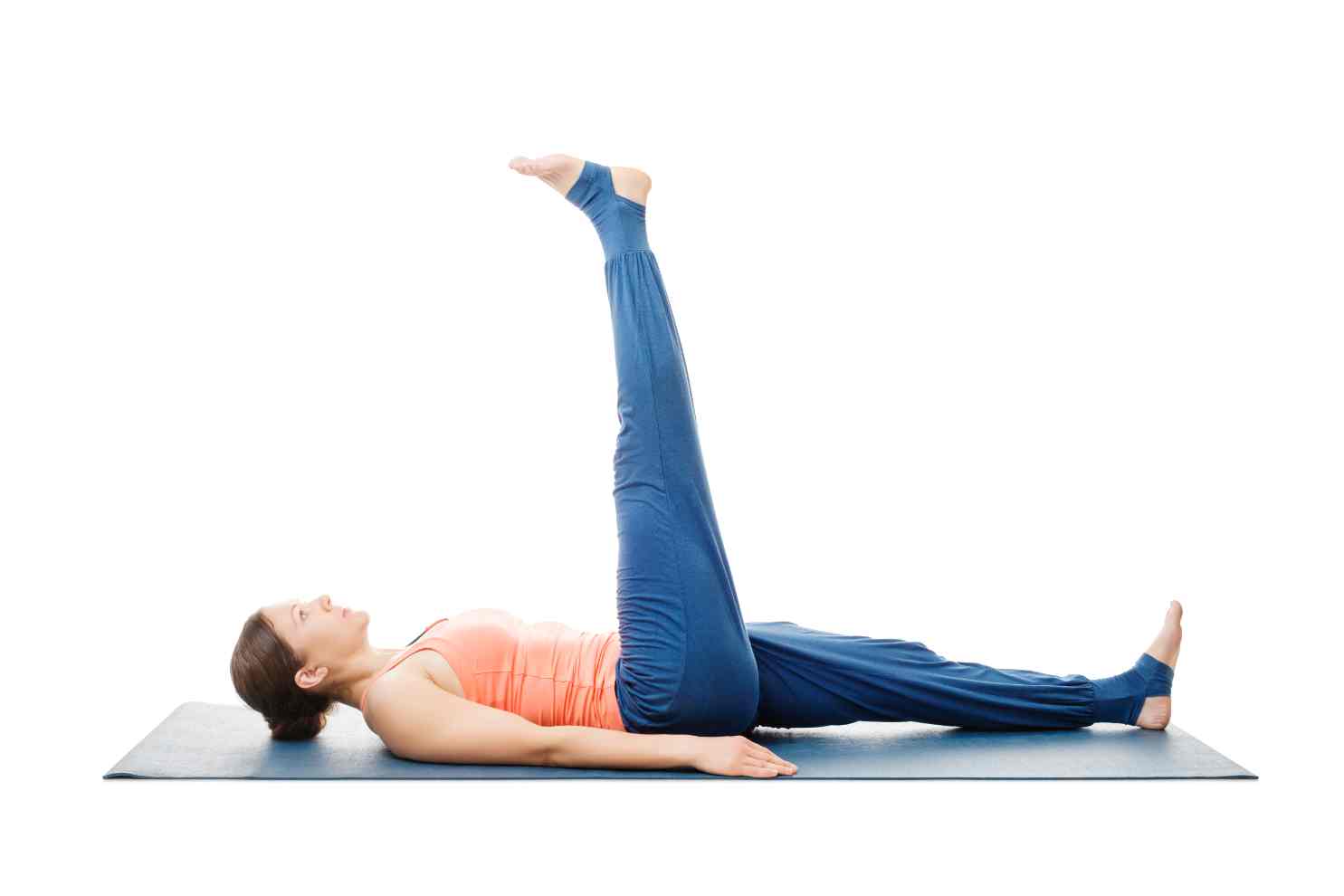
Uttanapadasana benefits include relief from the intestine and uterus tuberculosis, obesity, constipation, back pain, indigestion and more. It further regulates blood circulation to improve the functionalities of the heart, lungs, and liver.
Contraindications: This yoga pose is not suggested if undergoing a hernia, severe migraine, heart disorders or muscle injuries such as hamstrings, calves, gluteus maximus, quadriceps, and adductors (inner thighs). Moreover, pregnant women must not practise this asana.
Steps to Do Uttanapadasana:
Step 1: To perform Uttanapadasana, lie on your back with your legs straight and arms by your sides.
Step 2: Inhale and lift both legs to a 45-degree angle, keeping them straight and engaging your core muscles.
Step 3: Hold this position briefly, ensuring your lower back stays pressed into the floor.
Step 4: Exhale and slowly lower your legs back down to the starting position.
7. Naukasana (Boat Pose)
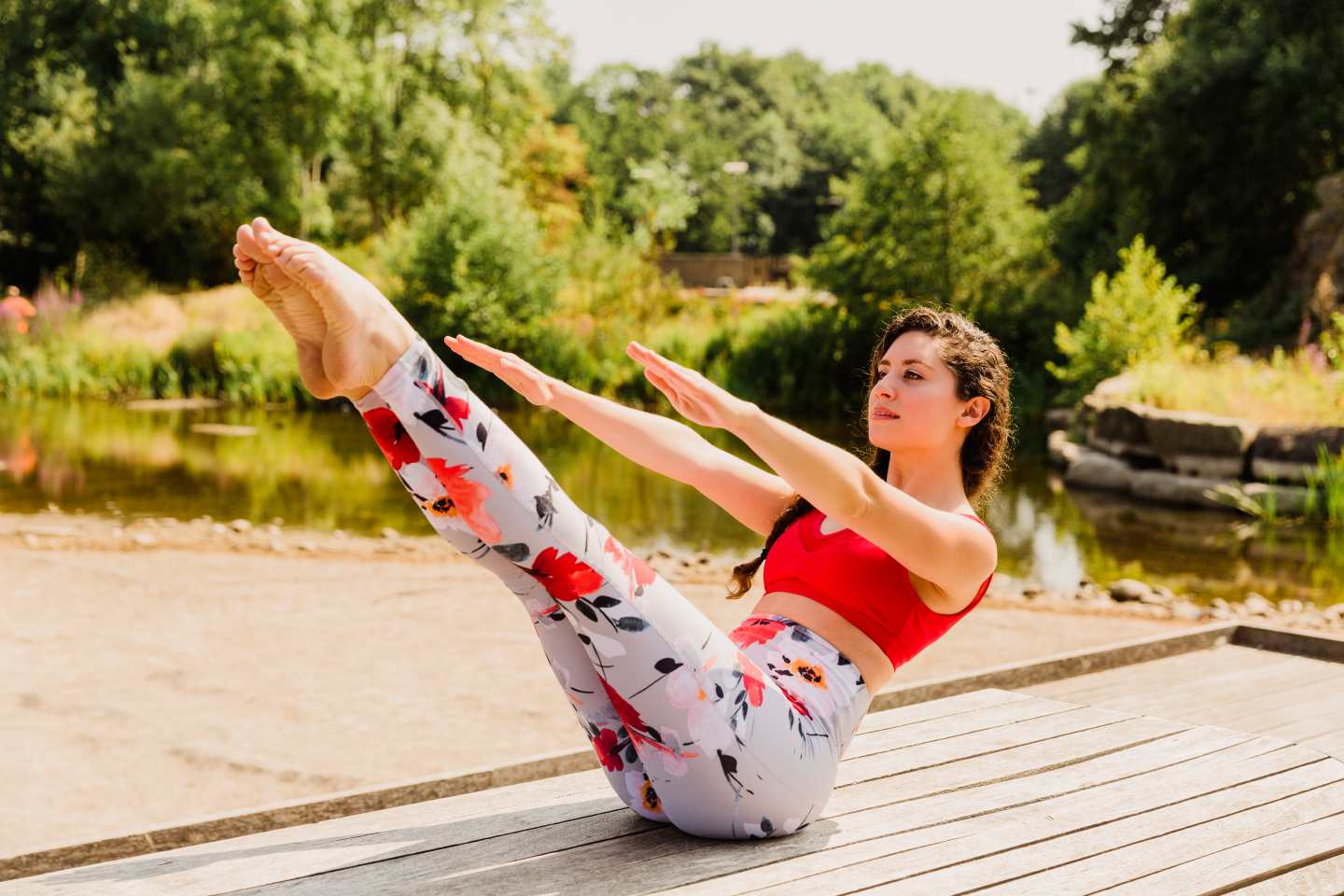
Another effective yoga pose to prevent TB patients is the Boat Pose, or Naukasana, which is beneficial for elevating the performance of the lungs, liver, and pancreas. It is a proven treatment for maintaining blood sugar levels by supplying adequate blood and oxygen, especially around the abdomen.
Contraindications: Anyone exhibiting asthma, cardiac complaints, low blood pressure, migraine, any chronic ailment, or spinal deformities should refrain from this yoga posture. Women must not practise this yoga pose to prevent tuberculosis during pregnancy and on the first two days of menses.
Steps to Do Naukasana:
Step 1: Sit with your legs extended and lean back slightly. Lift your legs off the ground and balance on your sit bones, forming a V shape with your body.
Step 2: Extend your arms forward, parallel to the floor, and hold the pose for a few breaths.
Step 3: Exhale and slowly lower your legs and arms back to the starting position.
8. Konasana (Angle Pose)

Tuberculosis patients can try this yoga pose to alleviate blood circulation and induce the functionalities of respiratory organs. Furthermore, the Angle Pose is beneficial in curing coughs and revitalising the immunity system.
Contraindications: Avoid Konasana if suffering from a spinal injury, shoulder stiffness, hypertension, acute arthritis and back problems, severe cardiac complications and pregnancy (during the 2nd and 3rd trimester).
Steps to Do Konasana:
Step 1: Stand with your feet hip-width apart and arms at your sides.
Step 2: Inhale and raise your right arm overhead, keeping it close to your ear.
Step 3: Exhale and bend to the left at your waist, stretching your right side while sliding your left hand down your left leg.
Step 4: Hold the pose briefly, feeling the stretch along your side. Inhale to return to the starting position, then repeat on the other side.
9. Mandukasana (Frog Pose)
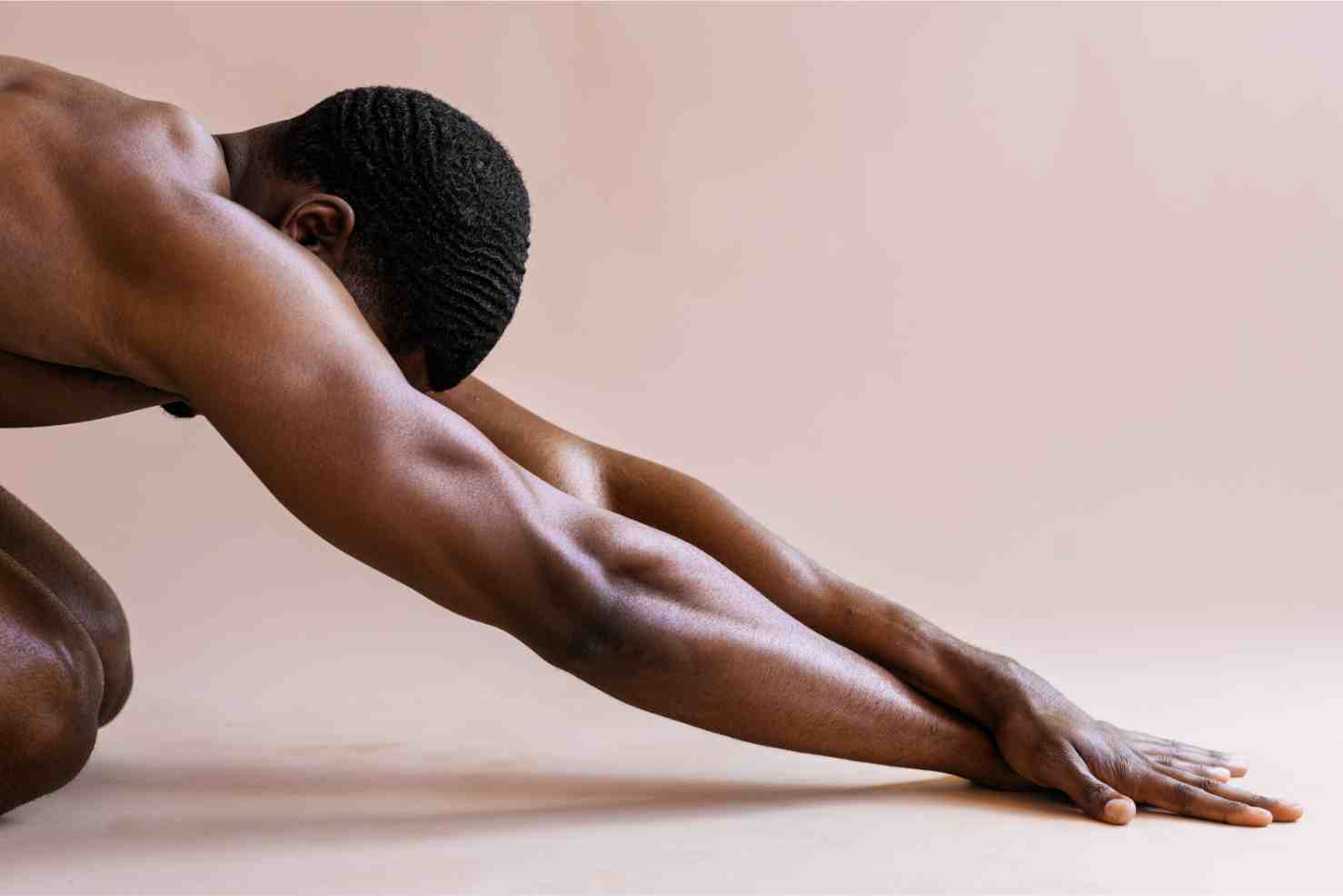
Performing the Frog Pose asana significantly enhances lung capacity to prevent the spread of Mycobacterium tuberculosis. In addition, individuals can combat digestive malfunctioning and improve their mobility and flexibility with regular practising of this asana.
Contraindications: Anyone with knee, ankle, or back pain or injury should avoid this asana.Those with herniated discs or chronic back pain should also refrain from this pose. If you have any existing medical conditions, it is important to consult a healthcare professional before practising.
Steps to Do Mandukasana:
Step 1: Kneel on the floor with your knees spread wide apart and your big toes touching.
Step 2: Sit back on your heels and place your hands on the floor for support.
Step 3: Exhale and lower your torso between your thighs, extending your arms forward or resting them alongside your body.
Step 4: Hold the pose for a few breaths, feeling the stretch in your hips and thighs, then inhale and slowly return to the starting position.
10. Ushtrasana (Camel Pose)
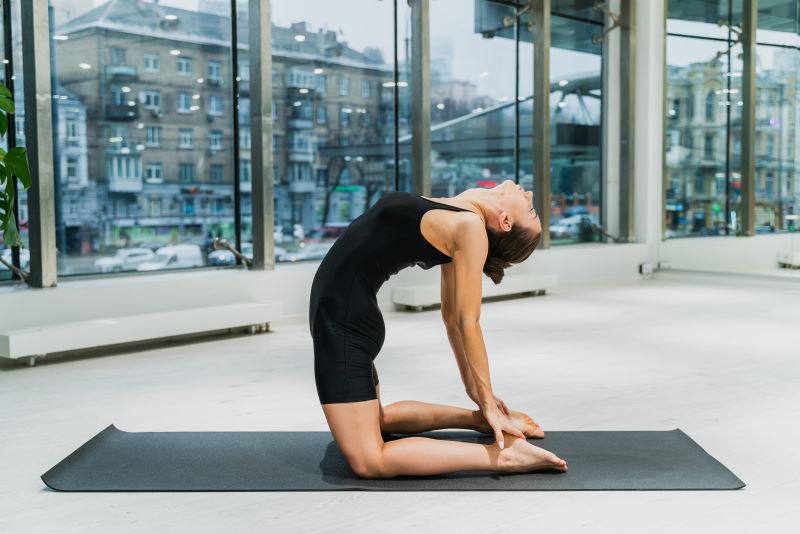
This back-bending yoga posture potentially activates the brain cells to help optimal functioning. It further elevates blood circulation and keeps respiratory diseases like bronchitis and asthma at bay. Practising Ustrasana can also help reduce stress, crucial for recovery and mental well-being in tuberculosis (TB) patients.
Contraindications: Ustrasana should be avoided by individuals with severe back or neck injuries, including herniated discs or chronic pain. Those with high or low blood pressure should also refrain from this pose.
Steps to Do Ustrasana:
Step 1: Kneel on the floor with your knees hip-width apart.
Step 2: Place your hands on your lower back, fingers pointing downward. Inhale and lift your chest upward while gently arching your back.
Step 3: Optionally, reach your hands back one at a time to grasp your heels.
Step 4: Hold the pose for a few breaths, lifting your chest and leaning slightly back while keeping your neck relaxed.
Step 5: Exhale, slowly release your hands from your heels and return to kneeling.
Effective Tips While Performing Yoga Asanas for Tuberculosis Patients
Yoga can benefit tuberculosis (TB) patients, but it's essential to approach it with care and under the guidance of a qualified instructor or healthcare professional. Here are some practical tips for tuberculosis patients practising yoga:
- Consult Your Doctor: Before starting any yoga practise, especially if you have TB or are recovering from it, consult your healthcare provider. They can advise whether yoga suits your current condition and suggest modifications based on your health status.
- Gentle and Slow Practise: Opt for gentle yoga poses and avoid vigorous or strenuous asanas that could strain your respiratory system. Slow movements and controlled breathing (pranayama) can be particularly beneficial.
- Focus on Breathing: Incorporate deep breathing exercises such as pranayama to improve lung capacity and oxygenation. Simple techniques like diaphragmatic breathing (belly breathing) or alternate nostril breathing (Nadi Shodhana) can be helpful.
- Avoid Inversions: TB can affect the lungs and make certain positions uncomfortable or risky. Avoid inverted poses like headstands or shoulder stands that may increase pressure in the chest or lungs.
- Modify Poses as Needed: If you experience fatigue, weakness, or pain during any pose, modify or skip it altogether. Listen to your body and practise within your limits. Ensuring comfort and safety is crucial for effective practise.
- Maintain Hygiene: Since TB is contagious, practise yoga in a clean environment to prevent the spread of infection. Wash hands thoroughly before and after practise, and avoid close contact with others while you are contagious.
- Build Strength Gradually: Start with basic poses and gradually progress as your strength and stamina improve. Allow yoga to help build your strength and enhance overall health. Patience and consistency are key.
- Rest and Recovery: Ensure you get plenty of rest between sessions to aid your recovery process. Avoid overexertion and prioritise quality sleep. Rest is essential for healing and regaining strength.
Diet Tips to Combine with Yoga for Tuberculosis Patients
Combining yoga with a nutritious diet is crucial for tuberculosis (TB) patients to support their recovery and overall well-being. Here are some diet tips to consider:
- High Protein Foods: Protein is essential for rebuilding tissues and supporting the immune system. Include lean meats (if non-vegetarian), fish, eggs, dairy products, legumes, nuts, and seeds in your diet.
- Vitamin-Rich Foods: Vitamins A, C, D, and E are essential for immune function and overall health. Include plenty of fruits and vegetables such as citrus, berries, leafy greens, carrots, sweet potatoes, and bell peppers.
- Calcium-Rich Foods: TB treatment can affect bone health. Include dairy products like milk, yoghurt, cheese, and fortified plant-based alternatives such as almond or soy milk. This helps maintain bone strength.
- Whole Grains: Choose whole grains like brown rice, quinoa, oats, and whole wheat bread or pasta. These foods provide energy and essential nutrients, including B vitamins and fibre, which support overall health.
- Healthy Fats: Including healthy fats from avocados, nuts, seeds, and olive oil supports overall health by aiding nutrient absorption and providing essential fatty acids necessary for energy and recovery during TB treatment.
- Hydration: Drinking ample fluids, particularly water, throughout the day is vital. Proper hydration supports detoxification processes, helps maintain organ function, and supports overall health, all of which are crucial during the treatment of tuberculosis.
- Small, Frequent Meals: Consuming smaller, more frequent meals throughout the day aids in maintaining steady energy levels and supports digestion, which is crucial if TB or its treatment affects appetite. This approach helps ensure consistent nutrient intake.
- Avoid Alcohol and Smoking: Alcohol and smoking can significantly weaken the immune system and interfere with the effectiveness of TB treatment. Completely abstaining from alcohol and avoiding smoking supports the body's healing process.
Who Should Do Yoga for Tuberculosis?
Individuals diagnosed with tuberculosis, especially those in the recovery phase, can benefit from incorporating yoga into their treatment plan. Yoga suits tuberculosis (TB) patients seeking to enhance their overall health, improve respiratory function, and manage stress.
Incorporating yoga can help TB patients by promoting lung capacity, improving breathing, and enhancing flexibility. Specific poses and breathing exercises can alleviate respiratory discomfort and support the immune system. Always consult a healthcare provider before starting a new exercise regimen, especially for those with severe symptoms or complications.
Who Should Avoid Yoga for Tuberculosis?
Individuals with active tuberculosis (TB) or severe respiratory symptoms should avoid practising yoga until they have recovered and received medical clearance. Additionally, those with complications or weakened immune systems due to TB or other conditions should proceed with caution and seek guidance from healthcare providers before engaging in yoga or any strenuous physical activity.
It's crucial to prioritise medical treatment and ensure that yoga practise aligns with overall health goals and recovery needs.
Disclaimer: It is always recommended to seek assistance from a professional yoga practitioner before performing any asanas to curtail the risk of injuries. Additionally, consulting a doctor is also essential to avoid any complications.
Affordable Health Insurance Solutions for You and Your Loved Ones










